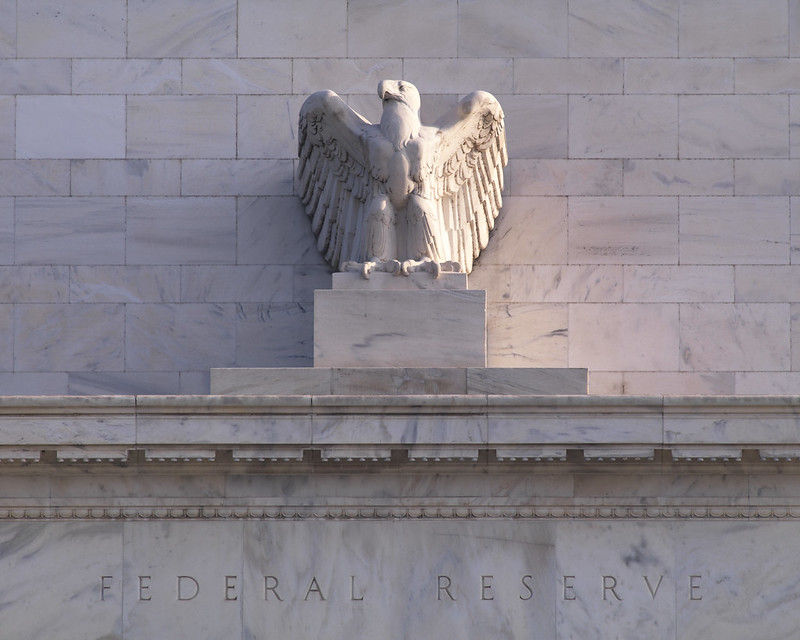As investors search for clues about when and how the US Federal Reserve will normalize monetary policy, Fed Chairman Jerome Powell deserves a place in the “central bank Hall of Fame” for developing a management and communication style that has provided the central bank with plenty of options to normalize policy depending on how growth and inflation evolve.
Powell has connected with markets very differently than his predecessors, showing a willingness to be behind the curve as he uses policy to curb inequality and unemployment, but ready to raise rates or cut quantitative easing if things don’t turn out as planned.
That covenant with markets distinguishes him from previous Fed chairs: Alan Greenspan spoke opaque “Fedspeak” but revealed little, Ben Bernanke spoke plainly but vacillated and Janet Yellen, shadowed by the “taper tantrum” from the year before her tenure, was hesitant to normalize rates despite ideal conditions for such action. Four years of clearly communicating policy and being flexible when needed has convinced markets that Powell’s Fed needs policy optionality. With 10-year US Treasuries yielding about 1.4% despite consumer prices increasing 5.4% in June, markets are signaling that, based on his record, Powell is a safe pair of hands.
Powell earned this reputation quickly. He became Fed chair in early 2018 amid a 10-day, nearly 10% S&P 500 drawdown and immediately showed his fortitude. Despite market jitters, he pressed ahead with the Fed’s planned policy tightening, hiking rates four times in 2018. And, unbowed by the memory of the “taper tantrum,” pre-pandemic he had set a plan to reduce the Fed’s $4.5 trillion balance sheet over four years via $50 billion of monthly sales.
More recently, Powell’s bold actions to thwart pandemic disruption through unprecedented policy support and innovative liquidity programs were undertaken with assuredness. He also changed course when needed, as when he allowed Fed purchases of high-yield securities, and he found broad bipartisan support for his policies during a time when US politics have been divided and acrimonious.
Now, with stocks markets buoyant, the US economy enjoying its most rapid expansion since 1984 and prices spiking in certain sectors, Powell is nearing the end of his first term, which expires in February. With an announcement on his potential renomination expected by October or November, in my view, Powell deserves a second term to manage the transition back to normalized monetary policy.
Policymakers question Fed role in housing market
Powell’s Fed faces unique challenges to keep the US economy from overheating as it emerges from its pandemic-induced hibernation: Interest rates remain near zero and the Fed’s balance sheet continues expanding by $120 billion monthly. Policymakers are questioning whether these accommodations are still needed, particularly the Fed’s support for a housing market in which prices are already at record highs and forecast to continue rising. While the Fed should soon announce its tapering plans, policymakers are keenly aware of having missed inflation targets for the past decade and the fact that labor supply could jump as emergency jobless benefits expire and schools reopen.
As Fed watchers debate whether the Fed is ahead of or behind the curve, the reality is Powell’s policy of allowing inflation to run above its 2% target to compensate from a decade of insipid price gains. Fed strategy is to always be slightly behind the curve, thereby affording optionality.
Powell’s Fed has been clearly signaling it is keeping all options open. St. Louis Fed President James Bullard has openly questioned whether the Fed should buy mortgages, Dallas Fed President Robert Kaplan has said he supports tapering sooner rather than later, and Fed Governor Christopher Waller has said the Fed should taper this year to allow for the option of raising rates in late 2022, if needed.
Investors can expect even more clarity on upcoming Fed policy actions, both on tapering and the timing and pace of potential rate increases, at the Fed’s annual Jackson Hole retreat in August and then in the following weeks as Fed officials reinforce any evolution of policy via their public appearances.
Implications for investors
For fixed-income investors, conditions suggest there is little credit or liquidity risk, with interest rate risk now front and center. Low levels of credit risk can be attributed to the improvement in US corporate balance sheets during the pandemic, a rapidly strengthening US economy, and a consumer sector remarkably flush with cash to spend. Liquidity risk, too, should remain subdued thanks to the Fed’s deft handling both of policy and communication, as evidenced by the sanguine market reaction to the Fed’s announcement in June that it plans to unwind its corporate bond purchasing program (the Fed’s Secondary Market Corporate Credit Facility.) On the other hand, interest rate risk could carry significant volatility in either direction over the coming quarters.
Given the Fed’s desire for policy optionality to fight unwanted inflation and the fact that many large US public pension plans are close to being fully funded, we could see increased demand for very long-duration debt, possibly resulting in a bear flattening of the US Treasury yield curve.
In such a scenario, all yields would rise but the front and intermediate portions of the yield curve would rise a little faster than the long end. This suggests that investors should have some credit spread so their fixed-income portfolios can still generate income. And in the current price environment, investors should also beware paying premiums for securities, which can introduce mark-to-market downside volatility should there be a sharp increase in interest rates or asset class outflows.
With so many unknowns, empowering the crisis-proven Powell to continue leading the Fed would assuage investor concerns and, if markets are to be believed, is probably the best option.
A column by James Dudnick, Portfolio Manager and Director at Allianz Global Investors.

